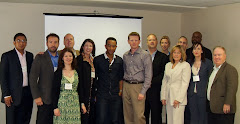
Featuring:
Abigail E. Disney – Filmmaker Tribeca Winner, BOD Disney Foundation
Dae Mellencamp – SVP General Manager, VIMEO/IAC
Dan Greene – Google TV + Video
Jerry Kupfer – Former “30 Rock” producer
Hope Frank – CMO CLUB, THX (Moderator)
Above all, this diverse and accomplished panel came together on three main beliefs about the power of film in media:
• Dedication to story
• Dedication to innovation
• Trust in their audience
Kupfer contributed much of the success of “30 Rock” to a mix of Tina Fey’s talent in creating the show and the strong, identifiable characters that viewers relate to. Popularity of the show boomed after the first season enjoyed an Emmy winning awards season, and even moreso after Tina Fey’s impersonation of Sarah Palin.
Like many shows, “30 Rock” is testing the waters of integrating broadcast and digital, introducing webisodes that lure people who find the material online to check out the full show on television. People are surfing the web while watching TV, too, so there is a real-time element that everyone is working to leverage.
Disney shifted the conversation to the power of film to ignite social change. She told of successful non-violent protests featured in her documentary “Pray the Devil Back to Hell,” where her cameras were the only ones on the scene to capture powerful and important moments that would have been lost otherwise.
Disney believed that film has more power to influence than any other medium, especially in creating social movements and affecting policy. By targeting influencers, grassroots women’s groups and advocates country by country, she created a meta-story for the film that constituted a full marketing push for the movie. When distributing the film, Disney’s team capitalized on the word-of-mouth excitement surrounding the release to offer low-cost copies (along with posters and other marketing material) to whomever signed up to receive it. After that people could use the films as they liked, charging or not charging for showings and starting conversation groups afterwards to bring the message to life.
Mellencamp segued into the difference between YouTube and Vimeo. She felt as though while YouTube functions as an entertainment venue, Vimeo is a space where content is cultivated to reflect users’ interests and develop respectful communities around content.
Greene then brought the conversation around to metrics, describing how Google gave up their inroads to print and audio when it proved impossible to create the kind of valuable measuring tools Google is known for. He also added that Google knows it has entered a phase where it has become so big that people are naturally becoming distrustful of it. But the “Do No Evil” motto is alive and well within the company, he said, and Frank added that a visit to the Google campus is usually enough to convince skeptics.
Google can help marketers by making business as equitable as possible, forming inroads to end-users by producing the best online experiences in any number of
Frank asked if there is any sector Google is not planning to enter, noting their expansion a number of different verticals over the past few years. Search may not always be at the heart of the online experience, and if Google is going to stay relevant in 25, 50 or 100 years, Greene said they would have to find where the activity is heading and make sure Google is there. That could mean a step-change toward a more social media powered online experience.







No comments:
Post a Comment